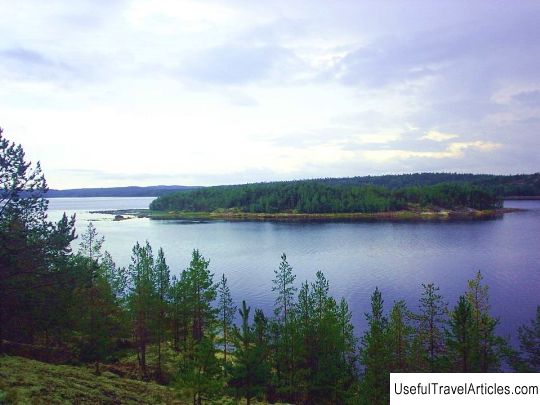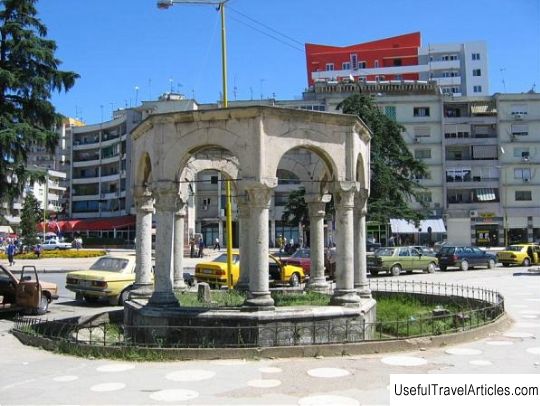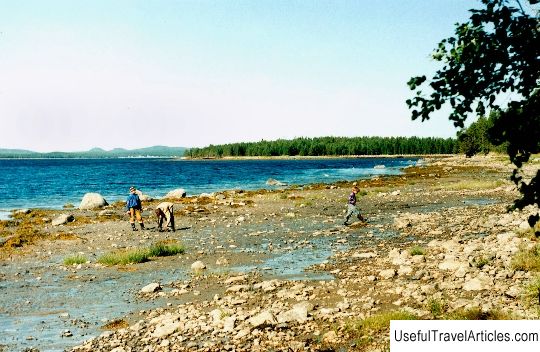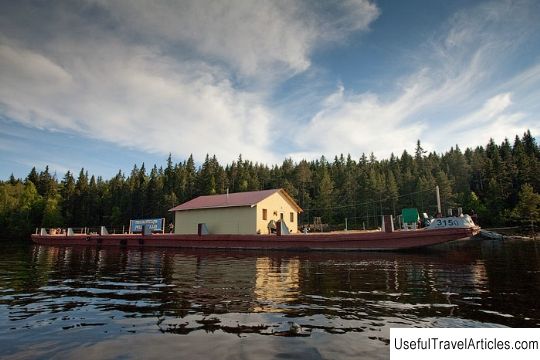South Oleniy Island description and photos - Russia - Karelia: Medvezhyegorsky District
Rating: 8,2/10 (654 votes) 
South Oleniy Island description and photos - Russia - Karelia: Medvezhyegorsky District. Detailed information about the attraction. Description, photos and a map showing the nearest significant objects. Photo and descriptionSouth Oleniy Island is located in the northwestern part of Lake Onega, namely in the Kid's Skerries system - 12 km from the eastern part of Kizhi Island. The length of the island is short, only 2.5 km; the width of the island is 0.5 km; the total area is 75 hectares. The island is known as a state natural monument. South Oleniy Island is considered to be a unique geological formation, because limestone-dolomite rocks were discovered on the island, which contain accumulations of oncolites and stromatolites, the age of which exceeds 2 billion years. During 1936-1938, employees of the Leningrad the Institute of Archeology carried out research, according to the results of which it was established that in the late Mesolithic period there was a cemetery of ancient inhabitants on this island, who lived on the coast of Lake Onega. At the end of the study, about 170 graves were discovered. As soon as the alleged burial site was found, it was conventionally divided into squares. The excavation work was carried out using ordinary shovels. Already at a depth of half a meter, reddish spots began to appear, indicating the first signs of graves. At this stage, the shovels are replaced by knives, brushes and scalpels, with which you can remove particles of earth from the bones. Excavations on South Deer Island have shown that the skeletons of buried people were in a variety of positions, but the largest number of skeletons were found lying on their backs and heading to the east. At the same time, the arms of the buried were extended along the body, less often - bent at the elbows or folded on the stomach. Some deceased were found in a lateral position, often with bent legs. Sometimes there were crumpled skeletons. There were found graves in which several people were buried, especially in the case of the burial of children who were buried with their parents or relatives. An important feature of the burial ground on Oleniy Island is the small number of children and the elderly among the buried. This fact can be explained by the fact that too few people in the Neolithic period lived to old age. In addition, dead children were often simply not buried, but wrapped in birch bark and placed in the hollow of a tree. A large number of personal belongings were found in the burial grounds on Deer Island, which were buried with the deceased. Most often, there were items made of bone, stone and horn. The total number of items found was 7132, which include bone tips of harpoons and arrows, reaching up to 30 cm in length. Bone daggers decorated with patterns and flint plastic blades were found. Among the adornments were found pendants made of bear tusks or elk incisors, various plates of beaver incisors with cuts at the ends, as well as other pendants made of stone and bone. In addition, sculptural images were found, which are examples of ancient art. The found sculptural images of snakes made of bone and a massive bone rod with the image of an elk's head are of particular value. According to the location of various decorations on the skeletons, the costume of the Deer Island was completely restored, which consisted of pants, a jacket, a hood and shoes , made from the skins of large animals, which fully met the requirements of the northern climate. The costume was sewn with needles cut from bone; fibers of nettle and bast, as well as tendons of ungulates were used as threads. Clothing was decorated with beaver and elk incisors, bear fangs and various pendants made of bone and stone. Judging by the remains of animals, fish and birds found, scientists came to the conclusion that the main occupations of the ancient population were fishing and hunting. In addition, the Deer Island has traces of a Neolithic workshop: ancient people came to the island to make stone tools. In addition, on the island in the 17th century, work was carried out on the extraction of limestone for the operation of the first factories of this direction.      We also recommend reading Monastery Waldhausen (Stift Waldhausen) description and photos - Austria: Upper Austria Topic: South Oleniy Island description and photos - Russia - Karelia: Medvezhyegorsky District. |




